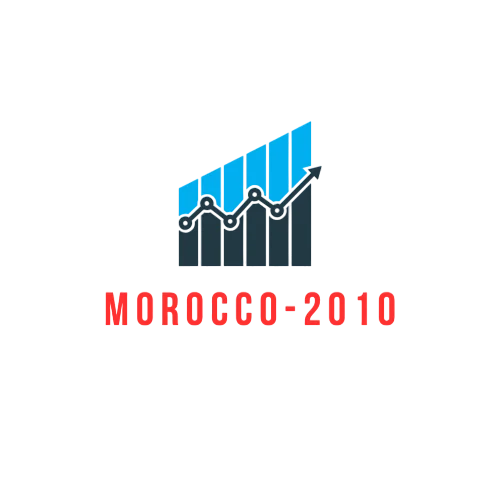In a world where healthcare costs can feel like a game of Monopoly gone wrong, understanding the economic trends of the healthcare payment system is more crucial than ever. With rising premiums and deductibles that could make even a seasoned accountant sweat, it’s time to dive into the fascinating (and occasionally baffling) landscape of healthcare financing.
From value-based care to the rise of telehealth, the payment system is evolving faster than a doctor can say “next patient.” As consumers become more empowered and technology reshapes the industry, these trends not only impact providers but also the wallets of everyday people. Buckle up as we explore how these shifts are changing the way healthcare is delivered and paid for, and why you should care about what’s happening behind the scenes.
Table of Contents
ToggleOverview of Healthcare Payment Systems
Healthcare payment systems encompass various methods used to finance medical services. These systems significantly influence accessibility and quality of care. Currently, value-based care models promote outcomes rather than volume, incentivizing providers to improve patient results.
Fee-for-service remains prevalent, allowing providers to charge for each service rendered. This model, however, often leads to unnecessary treatments. Capitation emerges as an alternative, where providers receive a set amount per patient regardless of services delivered, encouraging efficient use of resources.
Consumer-directed healthcare gains traction, emphasizing patient involvement in payment decisions. High-deductible health plans shift more costs to individuals, increasing financial responsibility and engagement in healthcare choices. As a result, transparency in pricing becomes crucial, helping consumers make informed decisions.
Telehealth’s rise has transformed service delivery and payment models. It provides convenient access while reducing costs for both patients and providers. Insurers increasingly reimburse telehealth services, reflecting its growing acceptance.
Understanding these dynamics informs stakeholders about potential industry changes. Awareness of ongoing economic trends aids consumers, providers, and policymakers in navigating the healthcare landscape more effectively. Adaptations in payment systems shape overall healthcare delivery, fostering a more efficient and cost-effective service environment.
Key Economic Trends
Economic trends significantly influence the healthcare payment system. Understanding these trends provides valuable insights into how they shape healthcare delivery.
Shift Towards Value-Based Care
Value-based care models focus on patient outcomes rather than service quantity. Providers receive compensation based on the quality of care delivered, aligning financial incentives with patient health. This approach aims to reduce unnecessary treatments associated with traditional fee-for-service models. Recent data shows that approximately 70% of healthcare payments now involve value-based arrangements. These models foster improved patient satisfaction and efficiency in resource use. Increased emphasis on preventive care also contributes to lower overall costs, benefiting both consumers and providers.
Rise of Telehealth Services
Telehealth services have seen significant growth in recent years, changing how patients access care. Insurers increasingly reimburse telehealth consultations, reflecting their acceptance in mainstream healthcare. Studies indicate that about 40% of patients prefer virtual visits for convenience and access. This trend addresses the demand for timely healthcare while reducing overhead costs for providers. Virtual care options also enhance accessibility for individuals in remote areas, helping bridge gaps in healthcare delivery. The integration of technology into payment systems further reinforces this trend, making telehealth a pivotal component of modern healthcare.
Impact of Regulatory Changes
Regulatory changes play a crucial role in shaping the healthcare payment system. Their influence affects various stakeholders, including consumers, providers, and policymakers.
Affordable Care Act’s Influence
The Affordable Care Act (ACA) significantly transformed healthcare payment mechanisms. It expanded coverage options, which boosted insurance enrollment by over 20 million people. Additionally, the ACA promoted value-based care, encouraging care quality over service volume. By implementing cost-sharing measures, the ACA increased accountability among providers, thereby improving patient outcomes. Many healthcare systems adapted their payment models to align with these new requirements, fostering enhanced collaboration among providers.
Changes in Medicare and Medicaid
Medicare and Medicaid adjustments impact millions of beneficiaries. Recent reforms focus on value-based payment incentives, improving care coordination and outcomes. About 40% of Medicare reimbursements now include value-based arrangements, driving providers to prioritize efficiency. States also get increased flexibility in managing Medicaid programs, allowing innovative payment strategies to emerge. Such changes encourage states to enhance access to care while managing costs effectively, ultimately benefiting vulnerable populations.
The Role of Technology
Technology plays a crucial role in transforming the healthcare payment system. Innovations streamline processes, improve efficiency, and enhance patient experiences.
Electronic Health Record Systems
Electronic Health Record (EHR) systems consolidate patient information, enabling better data management. Healthcare providers access comprehensive patient histories quickly, facilitating informed decision-making. Studies show that approximately 80% of healthcare organizations utilize EHRs, improving communication and reducing errors. This technology supports value-based care by tracking outcomes and performance metrics, aligning with the shift towards quality over quantity in healthcare services.
Payment Innovation through Blockchain
Blockchain technology introduces new possibilities for secure and transparent transactions in healthcare. Its decentralized nature ensures accurate record-keeping, which helps to reduce fraud and discrepancies in claims processing. About 30% of healthcare stakeholders are exploring blockchain solutions, recognizing its potential to enhance trust between providers and payers. Moreover, smart contracts simplify payment processes by automatically executing contracts when specific conditions are met, improving efficiency within the system.
Challenges Facing the Healthcare Payment System
Rising costs in the healthcare payment system pose significant challenges. Premiums and deductibles continue to escalate, straining both consumers and providers. Transparency in pricing remains inadequate, making it difficult for individuals to make informed healthcare choices. High-deductible health plans increase financial responsibility, leading to potential underutilization of necessary services.
Value-based care models face implementation hurdles. While they prioritize patient outcomes, many providers lack the infrastructure to track performance metrics effectively. The shift from fee-for-service to these models may create short-term disruptions in revenue streams, complicating the transition. Approximately 70% of healthcare payments also introduce variability in reimbursement rates, causing uncertainty for providers and negatively impacting cash flow.
Telehealth, despite its rapid growth, encounters barriers to widespread adoption. Approximately 40% of patients prefer virtual visits, yet disparities in access to technology can limit this option for low-income populations. Insurers need to establish consistent reimbursement policies that support telehealth services to promote equitable access.
Regulatory changes present ongoing challenges for stakeholders. The Affordable Care Act expanded coverage but also increased complexity in compliance for providers. Medicare and Medicaid reforms require constant adaptation, as about 40% of reimbursements now hinge on value-based arrangements. Providers must navigate these regulations to maintain efficient care delivery.
Technological advancements, while beneficial, introduce new complexities. Electronic Health Records help manage data but also create issues around interoperability and data sharing. About 80% of healthcare organizations use EHRs, yet many struggle to integrate systems seamlessly, impeding the flow of crucial information needed for patient care.
Sustainable solutions require collaboration among all stakeholders in the healthcare ecosystem. Addressing these challenges heads toward enhancing efficiency, access, and overall patient satisfaction.
The healthcare payment system is undergoing significant transformation driven by economic trends that prioritize value and accessibility. As consumers take on more financial responsibility through high-deductible plans, the demand for transparency in pricing becomes crucial. The rise of telehealth and technological innovations like EHRs are reshaping service delivery and enhancing patient engagement.
Moreover, regulatory changes continue to steer the focus toward value-based care, promoting better outcomes and efficiency. Stakeholders must collaborate to address challenges such as rising costs and access disparities. By embracing these trends, the healthcare industry can create a more sustainable and effective payment system that benefits everyone involved.





